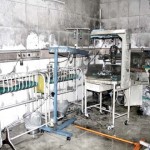 Despite the requirement for all health care workers to have annual training related to fire safety, hospital fires continue to occur. Operating rooms have an ample supply of each of the elements required to ignite a fire and the anesthetist must be vigilant to the threat of fire at all times.
Despite the requirement for all health care workers to have annual training related to fire safety, hospital fires continue to occur. Operating rooms have an ample supply of each of the elements required to ignite a fire and the anesthetist must be vigilant to the threat of fire at all times.
Ann Latner, JD, writing for the online blog clinicaladvisor.com describes an interesting scenario in which a fire occurred on a patient during a procedure. To summarize:
- Routine case (facial area) with patient receiving Monitored Anesthesia Care
- Patient’s Oxygen sat drops and CRNA applies supplemental oxygen
- Oxygen buildup under the drapes
- Surgeon uses cautery
- prep solution ignites and patient receives a facial burn
In addition to the burns, the patient required psychiatric follow-up and filed a law suit against the CRNA, the surgeon and the Hospital. At trial, each of the defendants had separate lawyers and each gave testimony. The Hospital affirmed that they had provided the required fire safety training. The surgeon testified that had he known oxygen was in use, he never would have used cautery. The CRNA was the only one of the three found to be liable for damages.
In the words of Ann Latner, the author, “Good communication is one of the best ways to avoid being a party to a lawsuit. Whether it is talking with your patient or a colleague, when making referrals, or even in chart notes (an important form of medical communication), having clear, direct, and open lines of communication can prevent unfortunate results. Mrs. H would have never been injured had Mr. D simply notified the surgeon of the oxygen use. No amount of testimony could make up for those few missing words during the procedure. Communication is key to better patient outcomes and to protecting yourself.”
Click here to read the full article and return with your comments.
